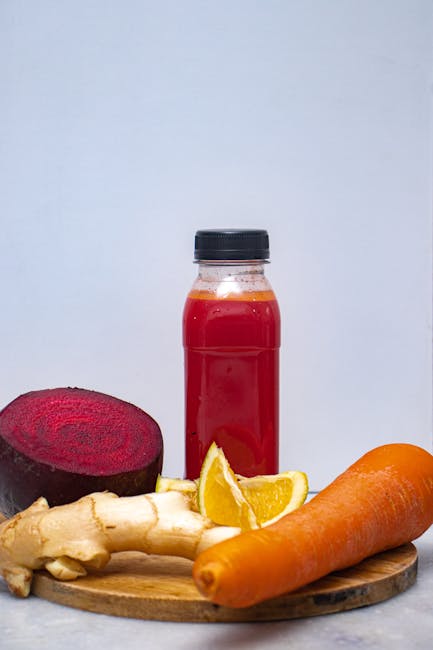The vibrant, tropical fusion of pineapple and coconut in a smoothie is a relatively recent culinary creation, a testament to globalization and our increasing desire for convenient, healthy, and flavorful treats. While pineapples and coconuts have rich individual histories spanning millennia, their combined presence in a blended beverage is a product of the latter half of the 20th century, coinciding with the rise of the blender and the growing popularity of smoothie culture. Pineapples, originally cultivated in South America, have a history intertwined with exploration and trade, arriving in Europe in the 15th century and quickly gaining popularity among royalty and the wealthy. Their spiky exterior and sweet, tangy flesh made them a symbol of exotic luxury. Similarly, coconuts, native to tropical regions across the globe, have been a staple food and source of materials for thousands of years, their significance reflected in numerous cultures and traditions across the Pacific and Indian Oceans.
The cultural significance of both ingredients is profound. In many Polynesian cultures, the coconut is considered a tree of life, providing food, water, fiber, and building materials. Its milk is a vital part of their diets, while its husk is utilized for crafting and building. Pineapples, meanwhile, have become a symbol of hospitality and celebration in various parts of the world, representing warmth and welcome. Their widespread cultivation and consumption showcase the globalization of food and the movement of ingredients across continents. Interestingly, global pineapple production exceeds 25 million metric tons annually, highlighting its significant role in the global food system. The combination of these two powerful symbols in a simple smoothie reflects our modern appreciation for both the convenience of readily available ingredients and the rich history and global connections embedded within them.
The rise of the smoothie itself is a relatively modern phenomenon, gaining significant traction in the late 20th and early 21st centuries. Driven by health consciousness and the desire for quick and easy meals or snacks, smoothies have become a staple in many diets worldwide. The ease of blending fruits, vegetables, and liquids, and the resulting nutritional value and customizable flavors, have contributed to their immense popularity. The pineapple coconut smoothie, in particular, has gained traction due to its refreshing taste, natural sweetness, and the perceived health benefits of both pineapple (rich in Vitamin C) and coconut (a source of healthy fats). This recipe, therefore, represents not only a delicious and healthy treat but also a fascinating intersection of culinary history, global trade, and modern food trends.
Ingredients and Measurements
Creating the perfect pineapple coconut smoothie hinges on the precise balance of ingredients. This recipe yields approximately two 12-ounce servings. Feel free to adjust the quantities based on your needs, but remember that altering the ratios too drastically might affect the overall texture and flavor profile.
Fresh Pineapple: We highly recommend using fresh pineapple for the best flavor and texture. Aim for approximately 1 ½ cups of cubed, ripe pineapple. Ripe pineapple will be fragrant and slightly soft to the touch. Avoid using overly hard or bruised pineapple, as this will impact the smoothness of the smoothie. Approximately 300-350 grams of pineapple is ideal. If using frozen pineapple, reduce the amount of ice slightly, as frozen pineapple will already contribute to the smoothie’s thickness.
Coconut Milk: The type of coconut milk you choose significantly influences the richness and creaminess of your smoothie. Full-fat coconut milk is strongly preferred for its decadent texture and intense coconut flavor. Use one (13.5 ounce) can of full-fat coconut milk. Light coconut milk will result in a thinner, less creamy smoothie. If you prefer a less rich smoothie, you can use a combination of full-fat and light coconut milk, adjusting the ratios to your taste. Ensure the coconut milk is well-shaken before adding it to the blender to prevent separation.
Coconut Water: Coconut water adds a refreshing touch and balances the sweetness of the pineapple and coconut milk. We recommend using approximately 1 cup (240ml) of coconut water. You can substitute this with regular water if needed, but the flavor will be slightly less nuanced. Using chilled coconut water will help keep the smoothie cold and refreshing.
Ice: The amount of ice you use depends on your preference for smoothie consistency and the temperature of your other ingredients. Start with ½ cup (approximately 120ml) of ice. Add more ice incrementally if the smoothie is too thin. Using crushed ice will help blend the smoothie more quickly and efficiently, resulting in a smoother consistency. Avoid using too much ice, as this can dilute the flavors.
Optional Ingredients: To enhance the flavor profile and add nutritional value, consider adding these optional ingredients: A small handful (approximately ¼ cup) of fresh spinach for a boost of vitamins, 1 tablespoon of honey or maple syrup to increase sweetness (adjust to your preference), or a squeeze of lime juice for a tangy twist. Remember to adjust the amount of liquid if adding other ingredients to maintain the desired consistency.
Important Note: Always wash and thoroughly clean all fruits and vegetables before use. Using ripe, high-quality ingredients is key to achieving the best possible flavor and texture in your pineapple coconut smoothie. Enjoy!
Preparation of Pineapple (Peeling, Coring, Chopping)
Preparing the pineapple is a crucial first step in making a delicious and smooth pineapple coconut smoothie. Proper preparation ensures you get the most flavorful and tender pineapple, free from any tough core or rind. For this recipe, we’ll assume you’re using one medium-sized pineapple (approximately 2-2.5 pounds), yielding about 2 cups of chopped pineapple. Adjust the quantities accordingly if you’re using a different sized pineapple.
Step 1: Peeling the Pineapple. Begin by standing the pineapple upright on a cutting board. Using a sharp, sturdy knife (a chef’s knife is ideal), carefully slice off the tough, spiky outer skin. Work your way around the entire pineapple, removing the skin in long, even strokes. Don’t worry about getting it perfectly smooth at this stage; we’ll trim any remaining skin later. It’s better to err on the side of caution and remove a little extra skin than to leave any tough bits behind.
Step 2: Removing the Eyes. Pineapples have eyes – small, hard bumps that run down the length of the fruit. These are tough and not pleasant to consume. Use your knife to carefully cut away the eyes, along the length of the pineapple. You can either slice them off individually or, for a quicker method, cut off thin strips of pineapple flesh that encompass the eyes. Be careful not to cut too deeply and waste valuable pineapple flesh.
Step 3: Trimming the Ends. Once the skin and eyes are removed, trim off both ends of the pineapple. Cut off a small section from the top and bottom, creating a flat, stable base for easier handling. This will also help you to properly core the pineapple.
Step 4: Coring the Pineapple. There are two main methods for removing the tough, woody core: the vertical method and the horizontal method. The vertical method involves cutting the pineapple lengthwise into quarters, then using your knife to cut out the core from each quarter. The horizontal method involves slicing off thin rounds of pineapple and then using a small paring knife or melon baller to remove the core from each slice. Choose the method you find easiest and most comfortable. For this recipe, the vertical method is recommended for its efficiency.
Step 5: Chopping the Pineapple. Once the core is removed, you can chop the pineapple into smaller pieces. For a smoothie, you want relatively small pieces so that it blends easily. Cut the pineapple quarters into roughly 1-inch chunks. Avoid making the pieces too small, as this can lead to a mushy texture in your smoothie. If you prefer a smoother texture, you can cut the pieces even smaller. Finally, transfer the chopped pineapple to a bowl or container and proceed with the next steps of your smoothie recipe.
Professional Recommendation: For optimal flavor and texture, always use a ripe pineapple. A ripe pineapple will have a sweet aroma and will yield to gentle pressure when squeezed. If using a very ripe pineapple, you may wish to chill the chopped pineapple for at least 30 minutes before blending to prevent excessive browning.
Preparation of Coconut (opening, scooping, measuring)
This section details how to prepare fresh coconut for your Pineapple Coconut Smoothie. Using fresh coconut offers a richer, more nuanced flavor than using canned coconut milk. While it requires a bit more effort, the reward is well worth it.
Opening the Coconut: The most challenging part is often opening the coconut. Several methods exist, but we recommend using a hammer and a sturdy surface. Never attempt to open a coconut with a knife; it’s incredibly dangerous. First, drain any remaining coconut water. You can pierce the coconut with a screwdriver or a sharp knife near one of the three eyes (the soft spots) to release the water into a bowl. Save this coconut water; it can be added to your smoothie for extra hydration and flavor.
Next, firmly tap the coconut all around its circumference on a hard, flat surface, like a concrete countertop or a heavy cutting board. This will create small cracks in the shell. Rotate the coconut frequently as you tap to ensure even impact. Once you hear a distinct cracking sound, rotate the coconut and continue tapping until the shell starts to break apart. Be cautious and wear protective gloves as the shell can be sharp.
Once the shell is cracked, you can carefully pry it open using a hammer and chisel (carefully!), or a heavy-duty cleaver. Alternatively, you can use a strong, heavy-duty bottle opener to help pry the shell apart. Work slowly and steadily, using leverage to separate the two halves. Once open, you can discard the outer husk and shell.
Scooping the Coconut Meat: Inside, you’ll find the white coconut flesh (meat) adhering to the inner shell. To remove it, use a spoon or a coconut scraper. A sharp spoon works best for this task. If using a spoon, carefully scoop out the coconut flesh, trying to avoid getting too much of the brown, hard shell fragments. You can also use a vegetable peeler to shave the coconut meat from the shell, resulting in thin, even strips of coconut. This method is particularly useful for adding texture to the smoothie.
Measuring the Coconut Meat: For this Pineapple Coconut Smoothie recipe, we’ll need approximately 1 cup of shredded or chopped coconut meat. Once you’ve scooped out the coconut meat, measure it using a measuring cup. If you’ve shaved the coconut using a peeler, you might need to accumulate more than 1 cup of coconut shavings to equal the same volume as 1 cup of shredded coconut. Remember that the volume of coconut meat varies depending on the size of the coconut. A large coconut will yield more meat than a smaller one.
Professional Recommendation: For ease of use, consider purchasing pre-shredded coconut. However, the flavor of freshly grated coconut is significantly superior. If using pre-shredded coconut, ensure it’s unsweetened to avoid altering the sweetness of your smoothie. Always wash your hands thoroughly after handling fresh coconut as it can be slightly sticky and may contain some residual coconut oil.
Blending Instructions
Creating the perfect pineapple coconut smoothie involves a careful blending process. Following these instructions will ensure a smooth, creamy texture and optimal flavor. We’ll be using a high-powered blender for best results, but a standard blender will work if you follow the tips below.
Step 1: Prepare your ingredients. Before you begin blending, ensure all your ingredients are prepped. This includes peeling and chopping the pineapple. A good rule of thumb is to cut the pineapple into roughly 1-inch chunks. This helps the blender process the fruit more efficiently and prevents large pieces from getting stuck. For frozen pineapple, ensure it’s not clumped together; break it apart into smaller pieces. If using fresh pineapple, you can add a few ice cubes to achieve a colder, thicker consistency. Open your coconut milk can and measure out the required amount (see recipe for specific measurements).
Step 2: Layering for optimal blending. The order in which you add ingredients matters. Start by adding your liquids first. This helps to create a base for the blender to work with and prevents the blades from getting bogged down. Pour in your coconut milk first, followed by any other liquid ingredients specified in your recipe (e.g., juice, water).
Step 3: Add the solids. Next, add your solid ingredients. Begin with the pineapple chunks. Add them gradually, allowing the blender to process each addition before adding more. This prevents overloading the blender and ensures a smoother final product. If you’re adding any other solid ingredients such as spinach or banana, add them after the pineapple. Avoid overcrowding the blender jar; leave some space at the top for the ingredients to move around during blending.
Step 4: Blend in stages. Start by blending on a low speed for about 15 seconds. This helps to incorporate all the ingredients and prevent splashing. Gradually increase the speed to medium, then high. Blend for another 30-45 seconds, or until the mixture is completely smooth and creamy. Scrape down the sides of the blender jar with a spatula midway through to ensure all ingredients are properly blended. If you notice any large chunks remaining, stop the blender, scrape down the sides, and blend again for a few more seconds.
Step 5: Adjust consistency. If your smoothie is too thick, add a little more liquid (water, juice, or coconut milk) a tablespoon at a time, blending until you reach your desired consistency. If it’s too thin, you can add a few more frozen pineapple chunks or ice cubes and blend again briefly. Taste and adjust sweetness. If needed, add a touch of honey or maple syrup to sweeten the smoothie to your liking.
Step 6: Serve immediately. Once your smoothie is perfectly blended, pour it into a glass and enjoy immediately for the best flavor and texture. If you need to store leftovers, transfer them to an airtight container and refrigerate for up to 24 hours. Note that the smoothie may thicken slightly as it chills.
Troubleshooting: If your blender is struggling to process the ingredients, try adding a little more liquid. If the smoothie is still too thick after adding liquid, you may need to use a more powerful blender or reduce the quantity of frozen fruit. If you encounter problems with the smoothie being too chunky, ensure the pineapple is properly chopped into smaller pieces before blending.
Serving Suggestions (Glass Type, Garnish)
The presentation of your Pineapple Coconut Smoothie is just as important as its taste! Choosing the right glass and garnish can elevate the drinking experience from simple refreshment to a luxurious treat. Consider the overall aesthetic you’re aiming for – tropical paradise, clean and modern, or something in between – when making your selections.
Glass Type: Several glass types work beautifully with this smoothie. A tall, slender glass, like a 16-ounce highball glass, showcases the vibrant color and creamy texture of the smoothie effectively. The height allows for a visually appealing layering effect if you choose to add additional ingredients. Alternatively, a 12-ounce hurricane glass provides a more casual, tropical vibe, perfect for a beachside brunch or a relaxed afternoon. For a more sophisticated presentation, a short, wide Coupe glass (around 8-10 ounces) offers a chic and elegant option, particularly if you’re serving the smoothie as a dessert-like treat after a meal.
Avoid using glasses with thick bases or overly ornate designs, as these can detract from the smoothie’s natural beauty. Clear glasses are best to fully appreciate the color, but frosted or lightly colored glasses can also work well, depending on your desired aesthetic. Ensure your glasses are thoroughly chilled before serving to maintain the smoothie’s coolness and prevent premature melting of any ice cream or frozen components.
Garnish Options: The garnish should complement the flavors of the smoothie without overpowering them. A simple yet effective garnish is a wedge of fresh pineapple. A small, triangular piece, about 1-2 inches wide, provides both visual appeal and a delicious contrasting texture. Consider using a pineapple wedge with its skin partially on for a more rustic look. Alternatively, you could use a thinly sliced, toasted coconut flake. A small spoonful (approximately 1 tablespoon) scattered around the rim of the glass adds a beautiful, textural element and enhances the coconut flavor.
For a more elaborate garnish, consider a combination of elements. A small sprig of fresh mint (approximately 3-4 leaves) adds a refreshing touch and a pop of green. A miniature umbrella or a small piece of candied ginger could also work, depending on your preference and the overall occasion. Important Note: Keep the garnish proportional to the size of the glass and the smoothie itself. An overly large or elaborate garnish can overwhelm the presentation.
Other Garnish Ideas: A dusting of desiccated coconut (1 teaspoon), a few toasted coconut chips (1 tablespoon), or a small scoop of coconut ice cream (1-2 tablespoons) placed on top of the smoothie can add visual interest and enhance the flavor profile. Remember to consider the overall balance and avoid using too many garnishes that could overpower the delightful taste of the pineapple coconut smoothie itself.
Professional Recommendation: Before serving, always inspect your garnishes for freshness and quality. Wilted or damaged garnishes can detract from the overall presentation. Arrange the garnish thoughtfully, ensuring it is visually appealing and complements the smoothie’s color and texture. A well-presented smoothie is a delightful experience for both the eyes and the palate.
Tips and Tricks (for smoother texture, sweetness adjustments)
Achieving the perfect pineapple coconut smoothie involves more than just blending the ingredients together. A little finesse can elevate your drink from good to extraordinary. This section focuses on achieving a supremely smooth texture and customizing the sweetness to your liking.
For a Smoother Texture: The key to a flawlessly smooth smoothie lies in the preparation of your ingredients. Frozen pineapple chunks, while convenient, can sometimes result in a slightly icy texture. To mitigate this, consider using a combination of frozen and fresh pineapple. For instance, use 1 cup of frozen pineapple chunks and ½ cup of fresh, diced pineapple. The fresh pineapple adds moisture and helps to break down the ice crystals more effectively during blending.
Pre-freezing your ingredients can also dramatically impact the texture. If using fresh pineapple, cut it into small pieces and freeze them on a baking sheet before transferring them to a freezer bag. This prevents the pieces from clumping together, ensuring even blending and preventing large chunks of ice from forming. This technique works well for other smoothie ingredients as well, like mango or banana.
Don’t overload your blender. Overfilling the blender can hinder its ability to properly blend the ingredients, resulting in a chunky smoothie. Work in batches if necessary, especially if using a less powerful blender. Start by blending the frozen fruits with a small amount of liquid (coconut milk or water) until they are mostly broken down before adding the remaining ingredients. This helps prevent the blender from stalling.
Consider adding a creamy base. For an extra-luxurious, smooth texture, incorporate a creamy element like full-fat coconut milk (1/2 cup), plain Greek yogurt (1/4 cup), or even a ripe avocado (1/4 of a medium avocado). These ingredients not only add creaminess but also contribute to a richer flavor profile.
Sweetness Adjustments: The sweetness of pineapples can vary depending on ripeness and variety. Start by tasting your smoothie before adding any sweetener. If it needs a touch of sweetness, begin with a small amount and add more gradually.
Honey or maple syrup (1-2 tablespoons) are excellent choices as they complement the tropical flavors of the smoothie. If you prefer a less intense sweetness, use a touch of agave nectar (1-2 teaspoons). Remember that the sweetness will also be affected by the type of coconut milk you use; full-fat coconut milk is naturally sweeter than light coconut milk.
For a naturally sweeter smoothie, opt for ripe, overripe even, pineapple. The sugars in the fruit will be more concentrated, requiring less added sweetener. You can also experiment by adding a few pitted Medjool dates (1-2 dates, pitted) for a naturally sweet and caramel-like flavor.
Adjusting the liquid: If your smoothie is too thick, add more liquid gradually – coconut milk, water, or even pineapple juice. Conversely, if it’s too thin, add more frozen pineapple or ice to achieve your desired consistency. Remember to blend thoroughly after each adjustment.
Experimentation is key! Don’t be afraid to adjust the recipe to your personal preferences. The beauty of smoothies is that they are highly customizable. Have fun exploring different flavor combinations and textures until you find your perfect pineapple coconut smoothie recipe.
Recommendations for Your Pineapple Coconut Smoothie
This delicious Pineapple Coconut Smoothie is a refreshing and nutritious treat, perfect for any time of day. To enhance your enjoyment and ensure optimal quality, consider the following recommendations:
Serving Suggestions: For a truly decadent experience, serve your smoothie in a chilled glass. Garnish with a few slices of fresh pineapple, a sprinkle of toasted coconut flakes, or a sprig of mint for an added visual appeal and burst of flavor. A small scoop of coconut ice cream can transform it into a delightful dessert smoothie. Consider using a fun straw or a reusable stainless steel straw to elevate the presentation. For a thicker smoothie, add a few ice cubes to the blender before processing. For a thinner consistency, add a little more liquid (coconut water or milk).
Storage Conditions: For best results, consume your smoothie immediately after preparation. The fresh flavors are most vibrant when enjoyed right away. However, if you have leftovers, store them in an airtight container in the refrigerator for up to 24 hours. Note that the texture might slightly change after refrigeration, becoming thicker.
Complementary Dishes: This smoothie pairs wonderfully with a variety of breakfast and brunch items. Consider serving it alongside a light breakfast of whole-wheat toast with avocado, a small bowl of granola with berries, or a tropical fruit salad. It also makes a refreshing accompaniment to lighter lunch options like a salad with grilled chicken or fish. For a more substantial meal, it can complement dishes like coconut curry or other light and flavorful meals.
Nutritional Information (Approximate per serving, based on a standard recipe): The nutritional content will vary slightly based on the specific ingredients used and their quantities. However, a typical Pineapple Coconut Smoothie will contain approximately 250-300 calories. The smoothie is a good source of Vitamin C from the pineapple, potassium from the banana (if included in the recipe), and healthy fats from the coconut milk. It also provides a boost of fiber, promoting digestive health. For precise nutritional information tailored to your specific recipe, use a nutrition calculator website and input the ingredients and their quantities.
Important Considerations: Always use fresh, high-quality ingredients for the best flavor and nutritional value. If you have any allergies or dietary restrictions, carefully check the ingredients of all products used before blending. Adjust the sweetness to your preference by adding more or less honey or agave nectar. Experiment with adding other tropical fruits like mango or papaya for variations in taste and texture. Remember to clean your blender thoroughly after each use to prevent bacterial growth.





